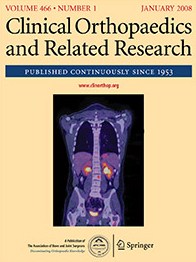
Arthroplasty
Trabecular metal cementless implants lead to improved knee scores following TKA
This report has been verified
by one or more authors of the
original publication.
Clin Orthop Relat Res. 2013 Nov;471(11):3543-53
145 patients, between the ages of 50 and 70 years, who were admitted for primary TKA and who had moderate to severe femorotibial gonarthrosis were randomly assigned into 1 of 2 groups to compare the efficacy of a tibial component fixed by a porous tantalum system to a conventional cemented implant in terms of clinical outcomes, complications/reoperations, and radiographic results. The findings of the study indicate that at the 5 year follow-up mean KSS and mean WOMAC scores were significantly better in the cementless group when compared to the cemented group. However, no differences in frequency of complications or aseptic loosening between the two groups were found.
Unlock the full article
Get unlimited access to OrthoEvidence with a free trial
Start TrialCritical appraisals of the latest, high-impact randomized controlled trials and systematic reviews in orthopaedics
Access to OrthoEvidence podcast content, including collaborations with the Journal of Bone and Joint Surgery, interviews with internationally recognized surgeons, and roundtable discussions on orthopaedic news and topics
Subscription to The Pulse, a twice-weekly evidence-based newsletter designed to help you make better clinical decisions
Exclusive access to original content articles, including in-house systematic reviews, and articles on health research methods and hot orthopaedic topics
Or continue reading this full article
Register Now

Subscribe to "The Pulse"
Evidence-Based Orthopaedics direct to your inbox.





































